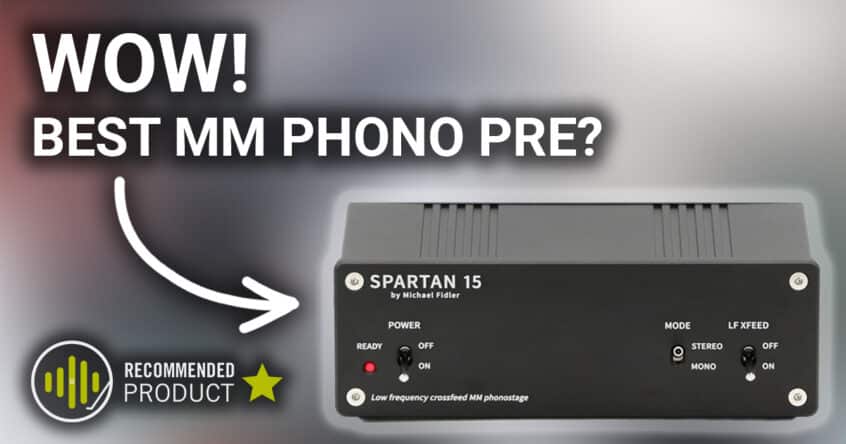Michael Fidler’s company, Classic Audio Ltd made significant waves across the vinyl community back in December 2021 with the release of his Spartan 10 model phono preamp.
By favoring all through-hole original circuit technology in place of cheaper surface-mounted exotically-sourced parts, the Spartan 10 was a breath of fresh air in a world where price and production scalability often take precedence. Impressively, the Spartan 10 also remained remarkably affordable at £380, which in phono preamp terms, is quite an achievement for a product that’s handmade in the UK.
Not content to rest on his laurels, Michael Fidler (the owner, designer and engineer behind Classic Audio) has released a new iteration of his celebrated first product, the Spartan 15.
The new Spartan 15 is said to be a complete re-design of the now discontinued Spartan 10, and what’s more, it’s also cheaper at just £330. Having received many requests from subscribers to review Michael’s preamps, I jumped at the opportunity to put the new Spartan 15 through its paces.
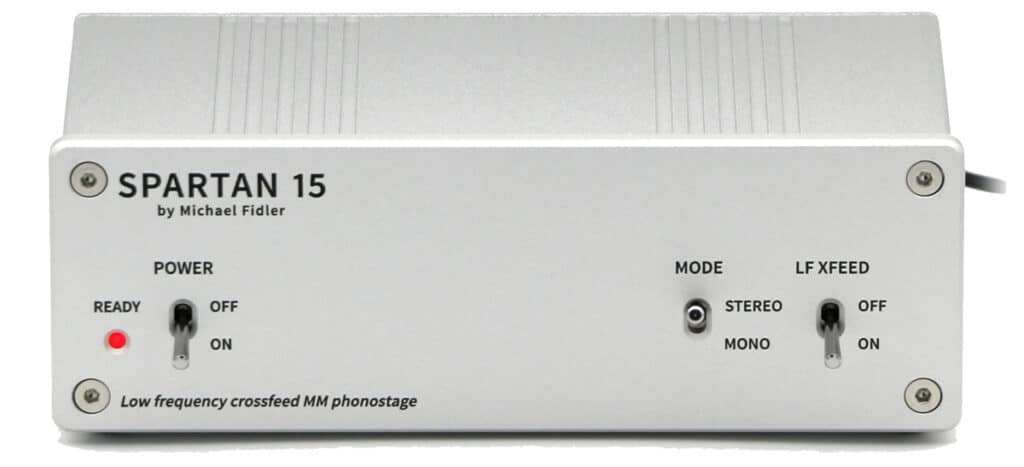
Background: Classic Audio Ltd
To understand what makes the Spartan 15 and its predecessor unique, it’s important to understand the founder’s approach. Michael formed Classic Audio Ltd in May 2020 with a mission to develop high-quality, hand-assembled analog audio electronics at affordable prices.
Michael boasts over ten years of electronics experience with a passion for restoring old HiFi equipment and building his own “problem-solver” electronics, bringing a refreshingly old-school approach to the market.
Aside from the already mentioned through-hole components, he also advocates linear transformer power supplies. At this point, there will be those who ask, “What does all of this mean? – What are the benefits!?”
Through hole Technology Vs Surface Mount
For more casual listeners, these terms are confusing, so in a nutshell, here’s what it means:
Through-hole (THT) and surface-mount (SMT) technologies are two different methods of constructing electronic circuits, each with its own set of advantages and disadvantages.
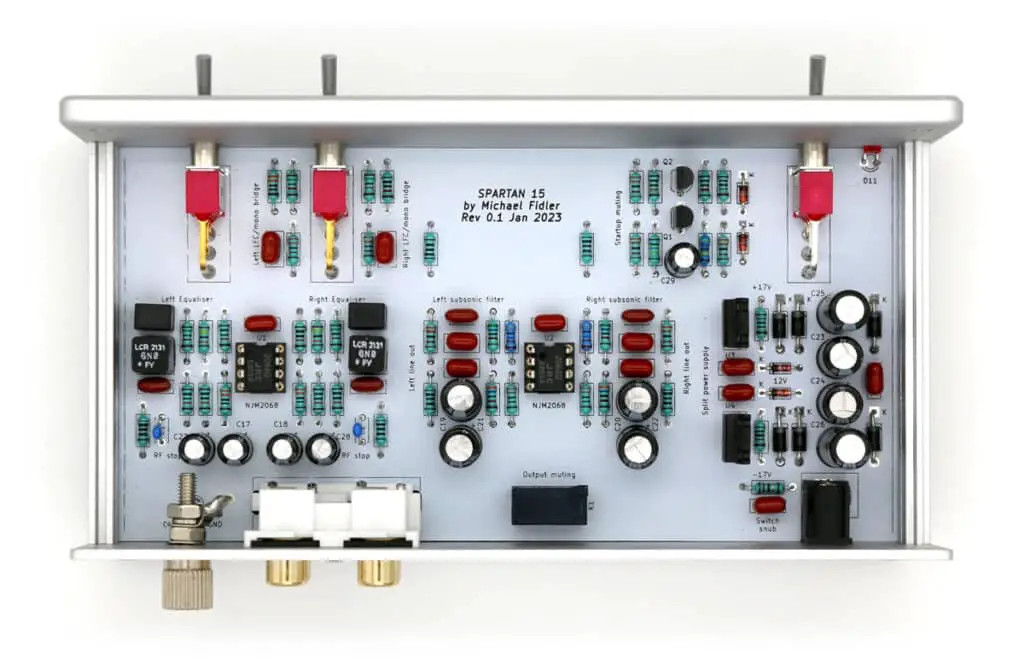
Through-hole technology is a method of fitting components with wire leads into holes drilled in printed circuit boards (PCBs) and soldering the leads on the opposite side to fix them in place. This technique contrasts with surface-mount technology, where components are mounted directly onto the surface of PCBs.
A key advantage to traditional THT is increased durability and greater heat tolerance. THT is also much easier to repair should anything go wrong, which stands in stark contrast to today’s very throwaway society.
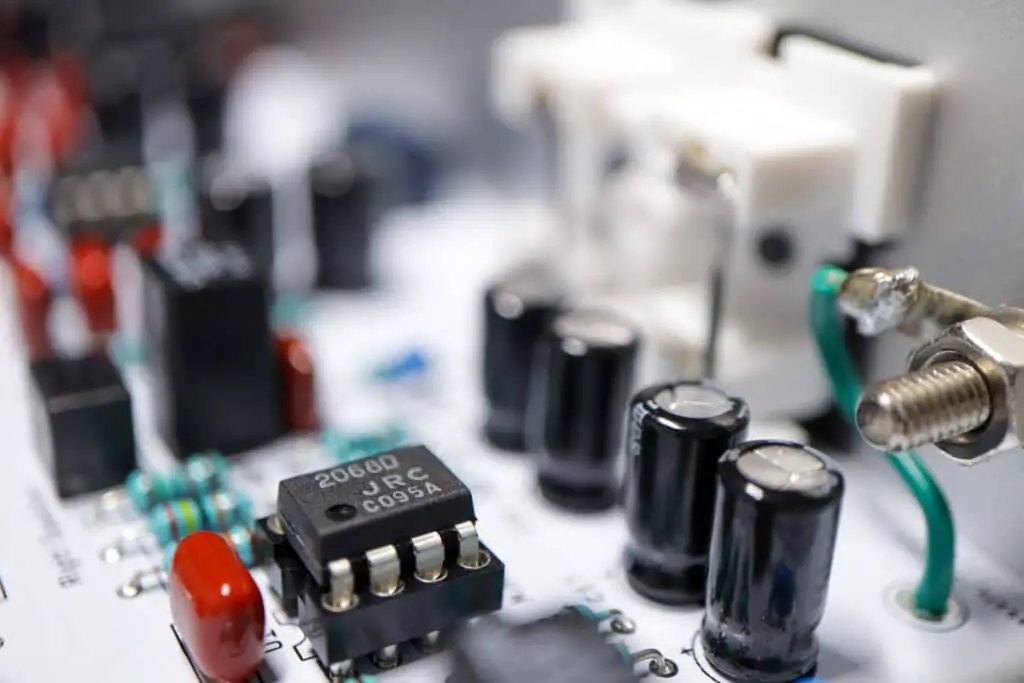
The downside is, THT is typically much more labor-intensive and costly to produce. THT circuits also take up more space, making it harder to design compact devices.
Affordable phono preamps increasingly use SMT as they’re easier to produce at scale and have a much smaller footprint, meaning you can fit more features into a smaller housing. This comes at the cost of durability and ease of repair.
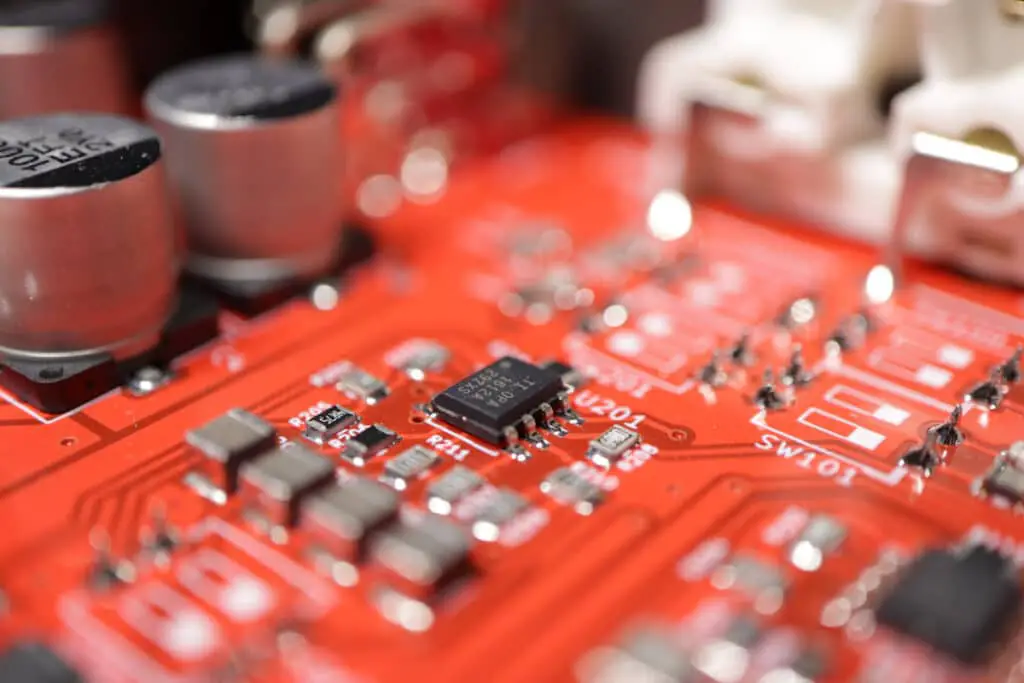
Linear Power Supplies
Linear power supplies are favorable in audio equipment design for helping to reduce unwanted noise. Many competitors at this price use cheaper switching power supplies, which have benefits in terms of power efficiency but can, among other issues, generate electrical noise and EMI (electromagnetic interference) due to the high-frequency switching operation, which may require additional filtering and shielding.
RIAA Accuracy
The fundamental job of any phono preamp for vinyl records is to amplify the tiny signal produced by your turntable’s cartridge and apply the necessary equalization curve in accordance with the RIAA standard.
By hand selecting each component for the Spartan 15, Michael claims to achieve a tight RIAA accuracy and channel matching of ±0.1dB! This is a remarkable achievement if the measurements are correct. It’s not uncommon to see a figure closer to 0.5dB margin of error on phono preamps, and some manufacturers don’t even state a figure.
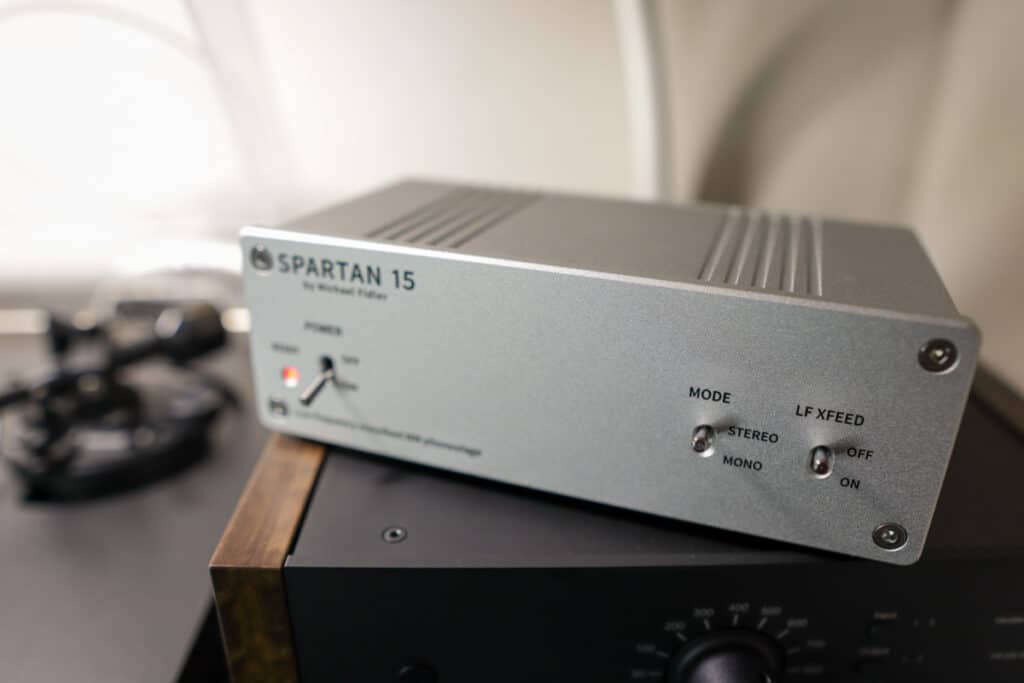
Mono & Low-Frequency Crossfeed Switch
On the front panel, there are two switches: a mono switch and a low-frequency crossfeed.
Mono switches are sadly quite rare on phono stages, which is a real shame, as they can significantly improve the playback of mono records – particularly older, shall we say, “well-loved” mono records. Increased surface noise can be a huge problem when tracking mono records with a stereo cartridge, as we now pick up vertical movement that would otherwise be completely ignored by a horizontal-compliant mono cartridge.
Arguably, a true mono cartridge is the best way to solve this issue, but a mono switch can make a significant improvement.
The second switch is a low-frequency crossfeed switch, which is said to reduce the potential for vinyl roar and rumble by blending the stereo channels to mono below 145Hz. According to Michael, the improved bass clarity is most noticeable when listening on headphones, so it’s going to be interesting to test this theory out.
Subsonic Filter
The Spartan 15 is equipped with an always-on subsonic filter to deal with the inherent low-frequency disturbance that can plague vinyl playback. Most impressively, the Spartan 15 claims to implement this filter while retaining ±0.1dB RIAA accuracy down to 40Hz. Michael goes into great detail about the Spartan 15’s specifications on his website, providing more transparency than I’ve ever seen from an equipment manufacturer. His technical prowess really shines through.
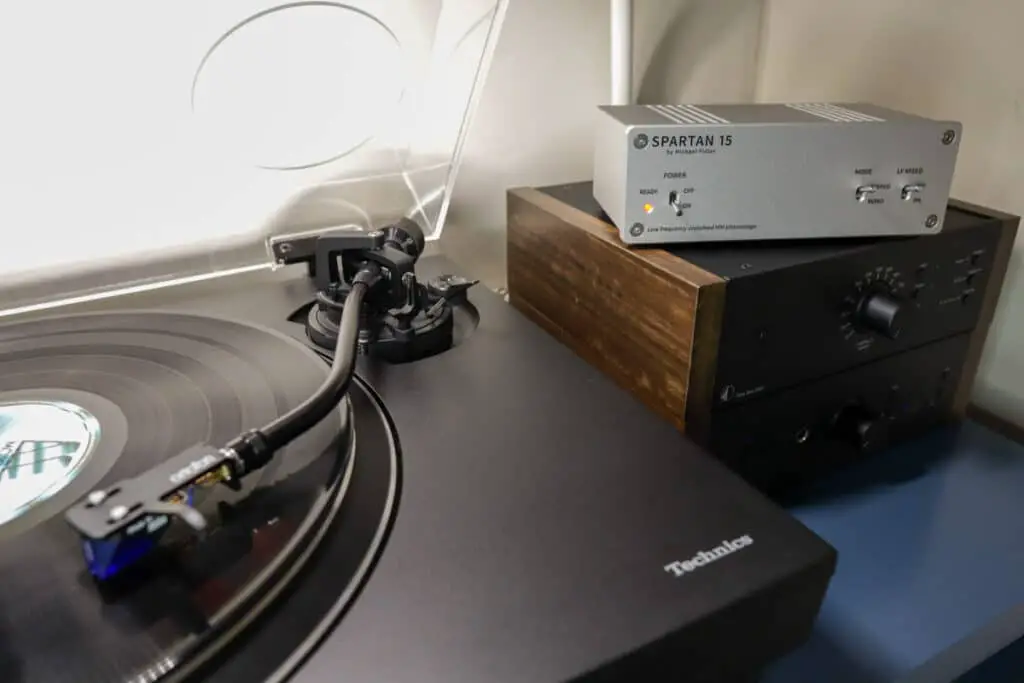
Spartan 15 Sound Test
The first thing that struck me about the Spartan 15 was just how quiet it is when idol; clearly, Michael’s two-stage amplification design and choice of components are paying off from the very start.
On firing up a number of very familiar records, I was equally impressed with the playback performance.
I compared the sound to a handful of phono stages I’ve recently reviewed, including the Schiit Mani 2, the Moon 110LP, and my Pro-Ject Tube Box DS2.
The Spartan 15 sounds very balanced across the board, imparting no discernable coloration to the sound. Certainly, it’s more balanced than the Mani 2, which is much more lively in the low-frequencies and less smooth in the upper-mid frequencies.
Transients are sharp, fast, and incredibly clean, bringing a sense of confidence to the overall presentation. The clarity in the low-mids, in particular, is exemplary, allowing me to hear more precise and clean bass notes compared to much of the competition.
I would go as far as saying this is the most neutral-sounding phono stage I’ve heard; it really does simply get out of the way! To my ears, this preamp sounds more neutral and has less coloration than my Moon 110LP v2 (a phono stage costing almost double the price). In the interest of balance, though, the Moon 110lp handles both moving magnet (MM) and moving coil (MC) cartridges, whereas the Spartan 15 is a MM-only design.
In addition to the beautiful transparency, the Spartan 15’s very low noise floor did reveal additional details (something many audiophiles would describe as a “very black background”). I noticed extra clarity on reverb trails, along with more subtle details during quieter moments on my records.
Spinning some older mono records, including a first pressing of With The Beatles and a copy The Beatles’ Hits EP, which is fairly “well-loved”, enabling the mono switch cleaned up the surface noise significantly! (Check the video at the top of this article to hear an example of this using the run-in groove).
I do own an Ortofon 2M Mono cartridge that I love for playing mono records more faithfully, but I must say the inclusion of a lesser spotted mono switch is handy if you don’t intend on investing in a mono cartridge. Once you hear the difference, you simply won’t want to play older mono records on a stereo system without one!
But what about that curious Low-Frequency Crossfeed switch? The effect of this is much more subtle than the mono switch, but bass clarity aside, I found this especially useful when listening to early stereo records through headphones.
For example, Wilson Pickett’s Hey Jude (1969) has the bass panned mostly to the left in places, which I find feels odd when listening on headphones. Engaging the LF X-Feed switch balanced out the mix and made headphones a much less disorienting experience. In a subtle way, it did also seem to give the bass more clarity in the mix.
Overall, the effect is very subtle, and on some records, I heard no discernable difference. How much you hear, it would seem, depends greatly on the mix and how the record was cut. All the same, it’s a useful feature to have, albeit a niche one.
Spartan 15 Review: The Bottom Line
In a world where it feels like almost everything has built-in obsolescence and prices continue to climb, the Spartan 15 is a breath of fresh air.
Price is often the decisive factor when bringing a product to market, and while everything is built to a price to a certain degree, Michael clearly retains a high degree of integrity in his approach to designing circuits that don’t compromise the original ambition.
In my humble opinion, the chassis design is a little rudimentary and utilitarian compared with some of the competition. But with this in mind, for an extraordinarily reasonable price, you get a British, handmade, boutique HiFi preamp that comfortably rivals models costing many times the price.
If you’re looking for the most neutral-sounding MM phono stage in the sub £500/$500 price bracket – you owe it to yourself to test-drive a Spartan 15—particularly if you own a large collection of vintage mono records.
VIEW PRODUCT (£330/$440)
Further Reading:
Best phono preamps
Best affordable phono preamps






